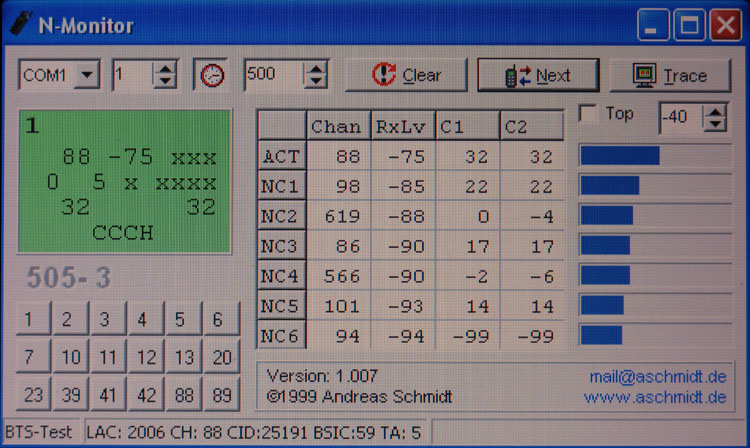Hardware
An old Nokia mobile with DCT-3 firmware (for network monitor mode) is required. The phone needs to be connected to a computer via its FBUS serial interface, so some level conversion hardware is also required. Since most modern laptops do not have an external serial port, an RS-232 to USB converter is also a good idea.
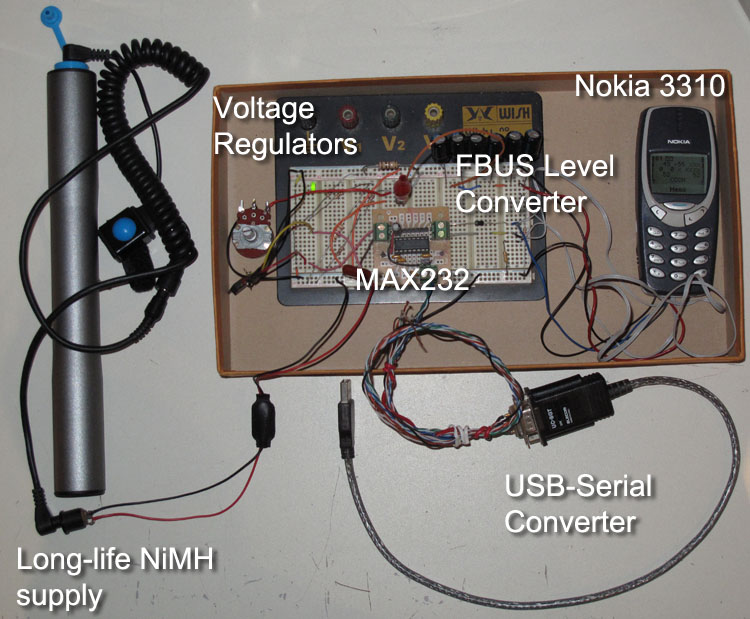
An old battery was used to interface with the phone. The cell itself was removed, along with the battery interface board, leaving (as you might imagine) just the case itself. Holes were drilled into the bottom of the case above the MBUS/FBUS pads on the phone, and small metal contacts were placed in the holes to complete the circuit:
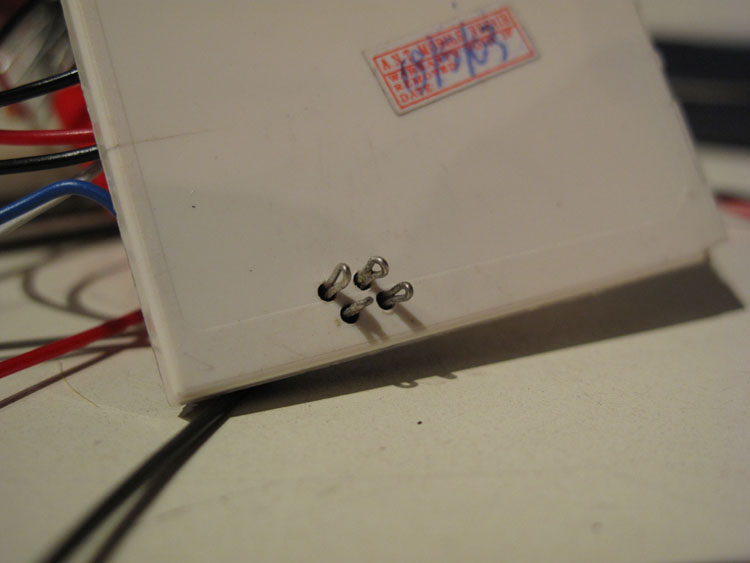
Note: the following picture from early in the experiment demonstrates powering the battery's original control circuit (so the mobile thinks it is still connected to a cell), such as found here. This is not a good idea, as a voltage difference is created between 'battery ground' and 'FBUS ground'. This configuration often causes the phone to switch off when attempting to transmit (probably to save itself from an overload), and has not been used. Instead the battery's control circuit should be removed and connections should be made to the phone's battery terminals directly (e.g. like this). In effect the phone will think it's on a test stand receiving a constant DC supply, and switch off its battery charging circuitry (see below).
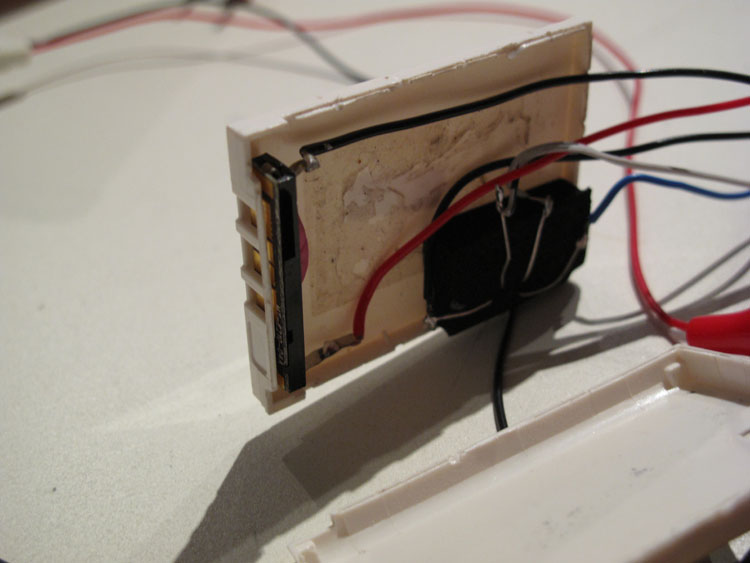
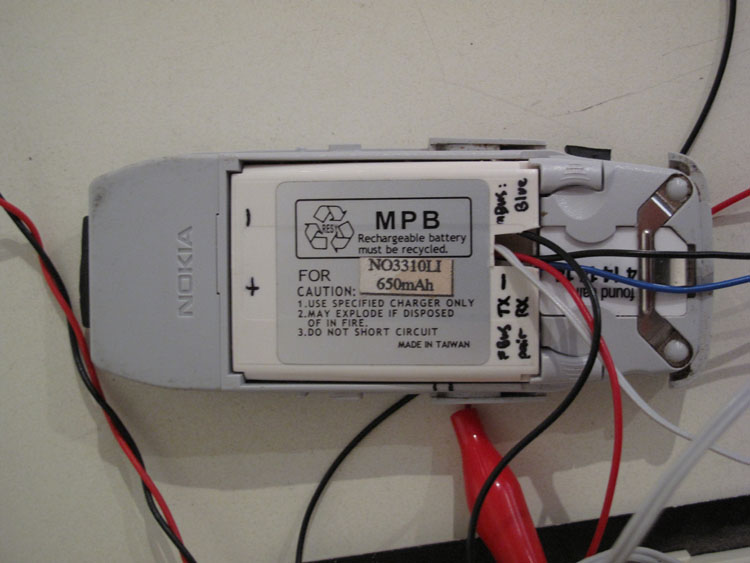
Once the phone's battery terminals are directly connected to (I just had some wire going through the battery case and wrapped around the four contacts), the correct resistors need to be chosen so the phone will think it is connected to a service battery:
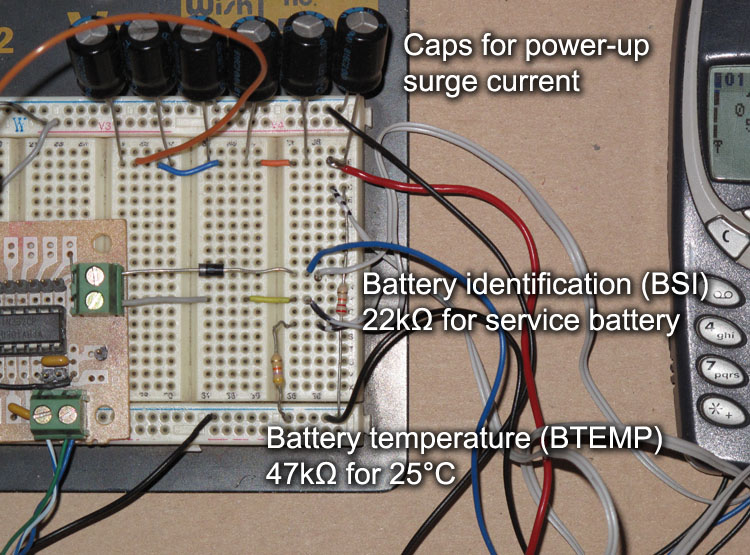
Finally, to make sure it works, you can fire up N-Monitor and see if your computer and phone can communicate:
